Pulse Crop Insect Diagnostic Series: Field Pea, Lentil and Chickpea (E1877, March 2018)
Availability: Web only
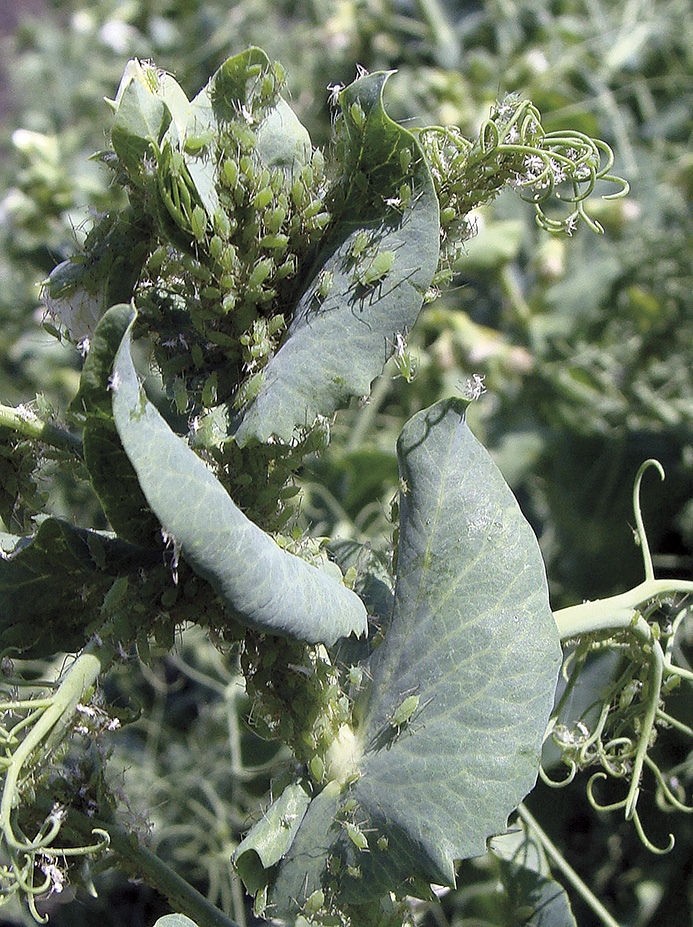
Cover photo: Pea aphids near tips of pea plants. (Janet Knodel, NDSU)
This Pulse Crop Insect Diagnostic Series provides integrated pest management (IPM) information on the key insect pests of pulse crops. IPM is a sustainable approach to managing pests by combining biological, cultural, physical and chemical strategies in a way that minimizes economic, health and environmental risks (National IPM Network).
Strategies of IPM include biological controls (beneficial insects, beneficial pathogens); cultural controls (planting and harvest dates, crop rotation); host plant resistance; mechanical/physical controls (weather events, trapping); and chemical controls (pesticides). IPM promotes the judicious use of pesticides to maintain pest populations below economic levels, prevent pests from causing unacceptable losses to crop quality or yield, and reduce impacts on nontarget organisms and the environment.
The key identification characteristics, crop damage symptoms, monitoring/scouting techniques and best IPM strategies are described for each pest. The series also contains general information on beneficial insects.
For scouting and determining economic thresholds (ET), insect population estimates are calculated by averaging counts taken from several separate areas of the field. If insecticides are necessary when pulse crops are flowering, producers should apply applications during the evening to minimize any negative impacts on pollinators, including bees and natural enemies.
Insect Pests
Seedling and Root Feeders
Wireworms
Limonius californicus (Mannerheim), L. infuscatus (Motschulsky), L. canus LeConte, Hypnoidus bicolor (Eschschultz), Aeolus mellillus (Say), Selatosomus aeripennis (Kirby), S. pruininus (Horn) and others.
Coleoptera: Elateridae
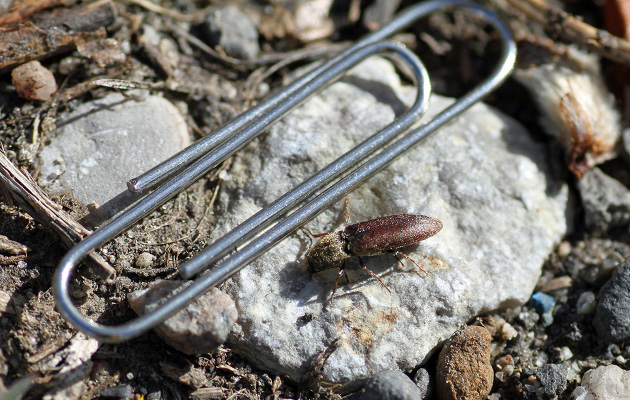
Figure 1. Wireworm adult. (Kevin Wanner, Montana State University)
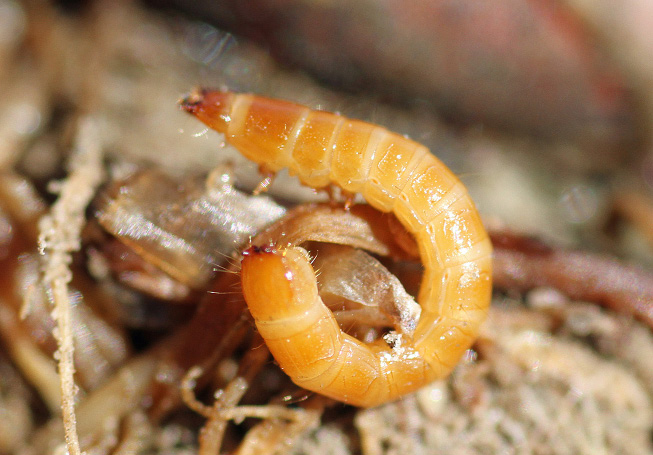
Figure 2. Wireworm larva. (Kevin Wanner, Montana State University)
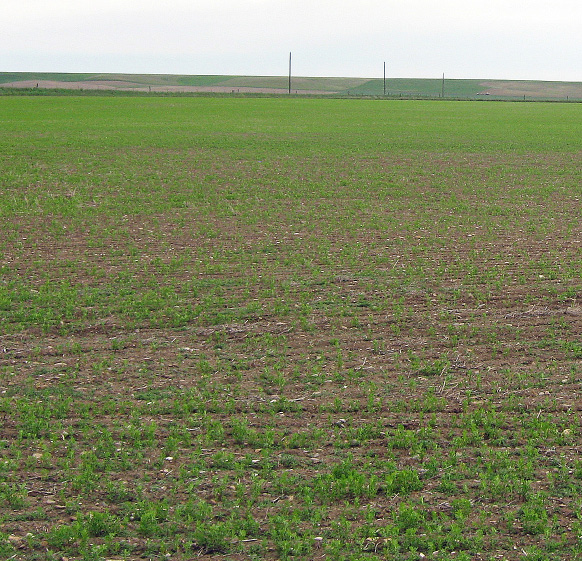
Figure 3. Wireworm plant stand loss. (Kevin Wanner, Montana State University)
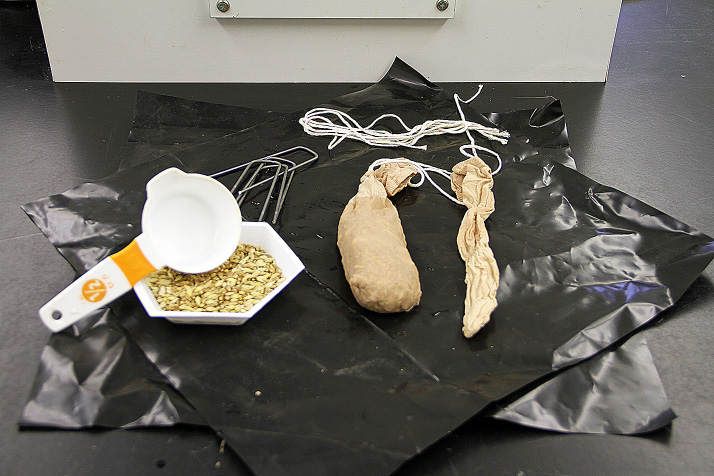
Figure 4. Wireworm bait trapping. (Kevin Wanner, Montana State University)
K.W. Wanner, P.B. Beauzay, S.D. Eigenbrode, J.J. Knodel, T.J. Prochaska, G.V.P. Reddy, A.J. Varenhorst and P.M. Wagner
PULSE CROPS INFESTED
Chickpea, field pea and lentil.
IDENTIFICATION
Adult: Figure 1
• Called click beetles because when on their back, they can snap their body and spring 3 to 6 inches high while producing a “click” sound.
• About ½ inch long; light reddish brown to dark black.
Immature (larva): Figure 2
• Hard, smooth, slender cylindrical or slightly flattened bodies; ¼ to ¾ inch long; creamy white and yellow to a darker orange yellow.
CROP DAMAGE (Figure 3)
Wireworms damage crops by feeding on seedlings or the germinating seed. Damaged plants soon wilt and die, resulting in a thinner plant stand.
SCOUTING TIPS
• During crop establishment, scout soil around damaged plants to identify wireworms feeding on the roots.
• Wireworms live below ground.
• Thin, patchy stand establishment after planting is often the first sign of wireworm activity.
• Monitor wireworms by placing attractive baits in the soil at 10 to 20 locations throughout the field or within areas with a history of poor stand establishment. One easy method is to fill a stocking with ½ cup of grain seed, soak the seed in water overnight and bury the stockings 4 to 6 inches deep. After 10 to 14 days, look for wireworms in and around the germinating “bait bag” (Figure 4).
CULTURAL CONTROLS
• Crop rotation and cultivation generally are ineffective.
• Alfalfa is tolerant and wireworm numbers may decline when alfalfa is in the crop rotation.
• Select planting dates that encourage rapid stand growth; larger plants can better tolerate the feeding damage.
ECONOMIC THRESHOLD
• An average of one to two larvae per bait station prior to planting justifies the use of an insecticide seed treatment or infurrow soil insecticide at plant.
OTHER IMPORTANT FACTS
• Wireworm infestations are more likely to become a problem when pulse crops follow grasses, including grain crops, pastures or Conservation Reserve Program land.
Stem and Leaf Feeders
Cutworms
Various species: dingy cutworm Feltia jaculifera (Walker), pale western cutworm Agrotis orthogonia Morrison, redbacked cutworm Euxoa ochrogaster (Guenée)
Lepidoptera: Noctuidae
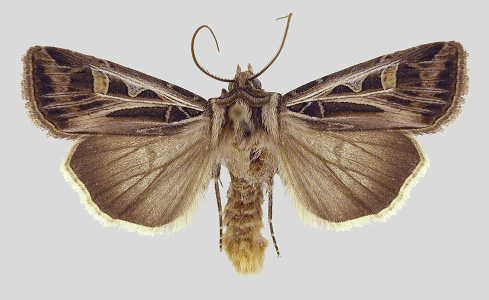
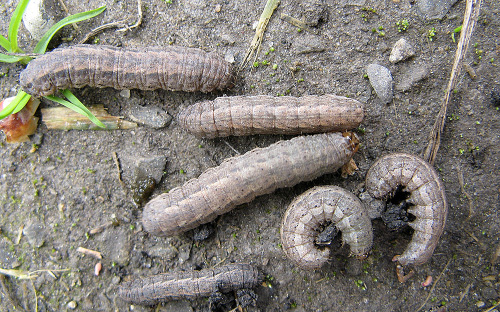
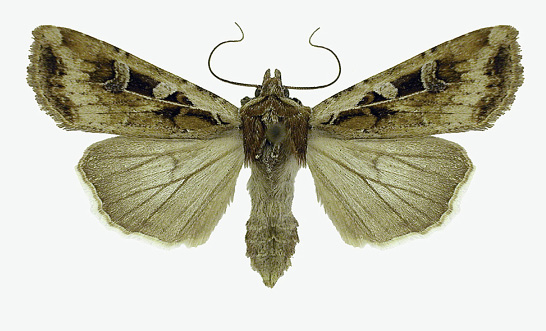
Figure 3. Redbacked cutworm moth. (Gerald Fauske, NDSU)
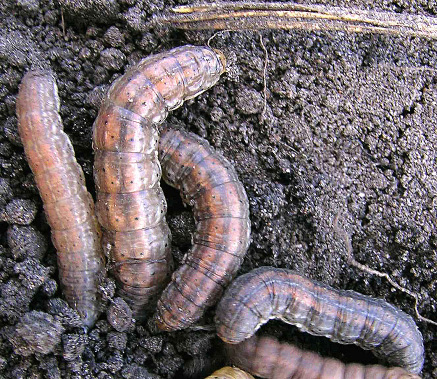
Figure 4. Redbacked cutworm larvae. (John Gavloski, Manitoba Agriculture, Food and Rural Initiatives)
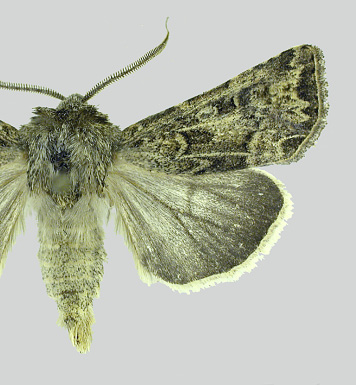
Figure 5. Pale western cutworm moth. (Gerald Fauske, NDSU)
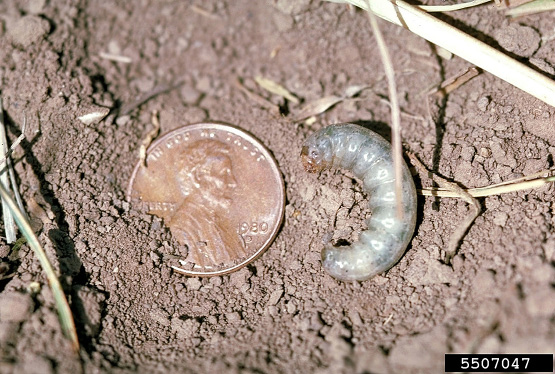
Figure 6. Pale western cutworm larvae. (Phil Sloderbeck, Kansas State University, www.bugwood.org)
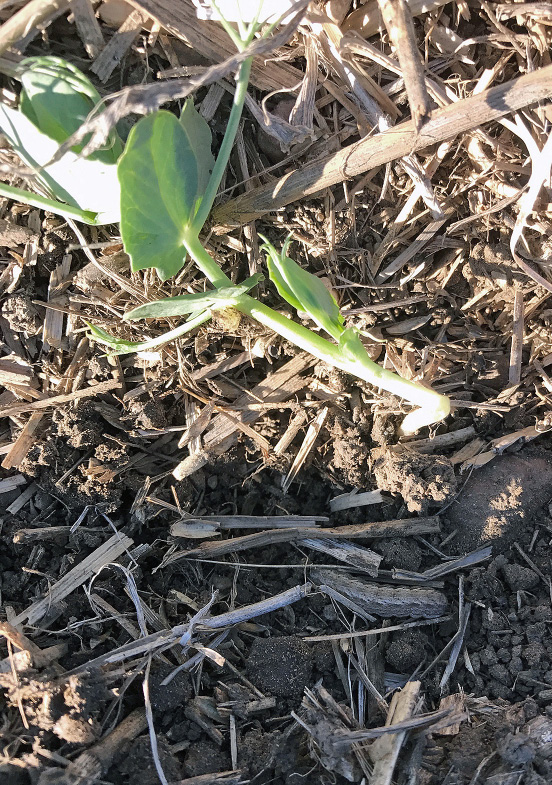
Figure 7. Cutworm damage – clipped pea plant. (Ryan Buetow, NDSU, Dickinson Research Extension Center)
A.J. Varenhorst, P.M. Wagner, P.B. Beauzay, S.D. Eigenbrode, J.J. Knodel, T.J. Prochaska, G.V.P. Reddy and K.W. Wanner
PULSE CROPS INFESTED
Chickpea, field pea and lentil.
IDENTIFICATION
Adult:
• Brown moths with variable markings on wings and about 1¼ to 1½ inch wing span, depending on species.
• Active during evening hours, which may make observations difficult.
• Females often attracted to fields with excessive residue, moisture or weeds.
Immature (caterpillar):
• All species have four abdominal prolegs.
• Caterpillars go through six instars (growth stages).
• Size and color varies by species:
– Dingy cutworms (Figures 1 and 2): smooth gray skin with four similar-sized black spots on each body segment; about 1 to 1¼ inches long.
– Redbacked cutworms (Figures 3 and 4): distinctive red band in the middle of their body; about 1½ inches long.
– Pale western cutworms (Figures 5 and 6): yellow head, black spots on each segment of their light gray-white body; about 1½ inches long.
CROP DAMAGE
Larvae will cut young plants in the seedling to six- to eight-leaf stages. Cut plants can be found drying up and lying on the soil surface. As damage continues, fields may have areas of bare soil where plants have disappeared, causing reduced plant stands. Cutworms initially will feed on leaf tissue or around stems without cutting them.
SCOUTING TIPS
• Cutworms emerge in April to early June and initially feed on weeds and volunteer crops.
• Later instar caterpillars are capable of cutting or clipping plants, which leads to reduced stands and potential yield losses.
• Look for freshly cut plants. When found, dig 3-plus inches deep around cut plants to find caterpillars.
• Cut plants initially appear on hilltops and south-facing slopes.
CULTURAL CONTROLS
• Reduce crop residue, grasses and weedy plants from fields prior to planting.
ECONOMIC THRESHOLD
• Field pea, lentil and chickpea: ET = two to three cutworm caterpillars per square yard.
• Insecticide management should occur in the evening.
OTHER IMPORTANT FACTS
• Pulse crops don’t rebound from cutworm feeding once cut.
• Pupae are in soil until moths emerge and begin flying in August-September.
• Cutworms overwinter as eggs or larvae, depending on the species.
Leaf and Nodule Feeders
Pea leaf weevil
Sitona lineata (L.)
Coleoptera: Curculionidae
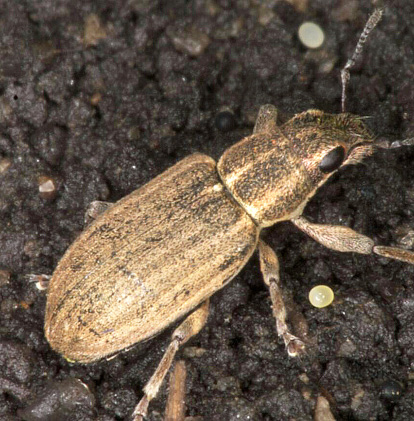
Figure 1. Pea leaf weevil adult and egg in soil. (Michael Dolinski, Canada)
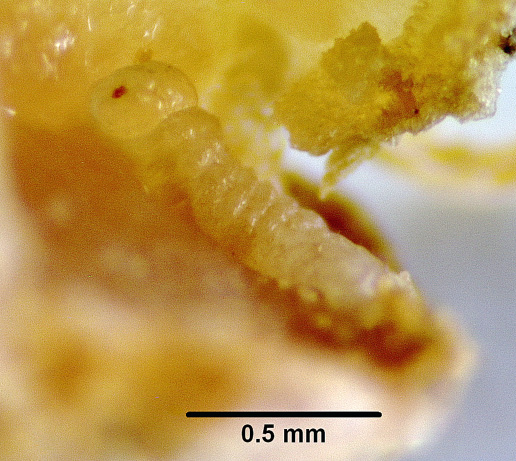
Figure 2. Pea leaf weevil larva – early instar. (Kevin Wanner, Montana State University)
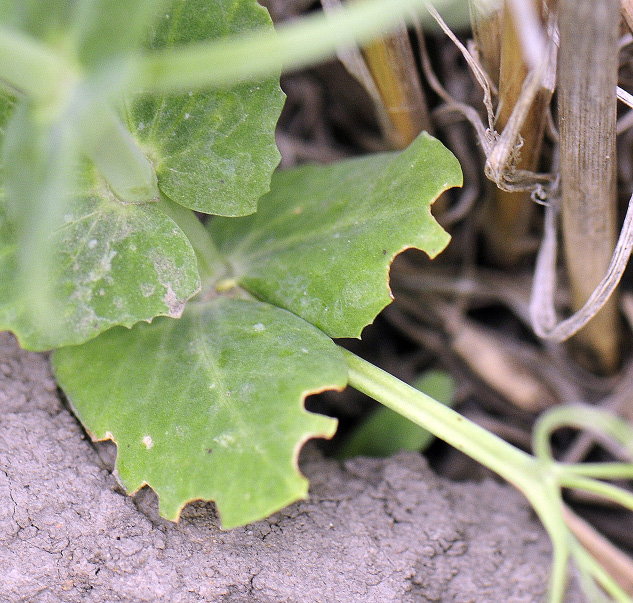
Figure 3. Pea leaf weevil leaf-notching on clam leaves. (Patrick Beauzay, NDSU)
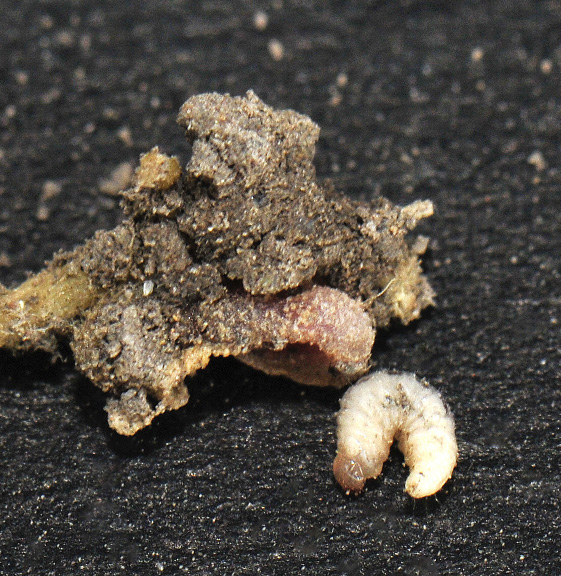
Figure 4. Pea leaf weevil mature larva feeding on the nitrogen-fixing nodule. (Patrick Beauzay, NDSU)
S.D. Eigenbrode, P.B. Beauzay, J.J. Knodel, T.J. Prochaska, G.V.P. Reddy, A.J. Varenhorst, P.M. Wagner and K.W. Wanner
PULSE CROPS INFESTED
Field pea (also prefers faba beans).
IDENTIFICATION
Adult: Figure 1
• Adult weevils: slender, grayish-brown beetles; approximately 1/5 inch long with a broad-shaped snout.
Immature (larva): Figure 2
• Legless larvae: soft-bodied and milky white with a dark head; about 1/7 to 1/5 inch long.
• When exposed, larvae curl into a “C” shape.
CROP DAMAGE
Overwintering adults migrate from perennial habitats into pea fields in the spring. Adults feed on seedlings, causing a characteristic notching along the clam-leaf margins (FIGURE 3). If severe, leaf feeding can reduce stand counts. Notching typically occurs during the first five to seven nodes of plant growth. The most severe injury occurs when the plants are young. A single female can lay up to 3,000 eggs during her lifetime. Larvae hatch from eggs laid in the soil and migrate to the nitrogen-fixing root nodules, where they feed (FIGURE 4). Larvae actively feed on and in the nitrogen-fixing nodules, which causes severe damage to the pea plant, reduces the level of nitrogen available for the crop and can reduce yield. In August and September, adult weevils emerge from the pupae in the soil and migrate to overwintering sites.
SCOUTING TIPS
• Scout diligently during the early crop stages.
CULTURAL CONTROLS
• Practice reduced tillage rather than conventional tillage.
• Seed later than earlier.
• Plant a trap crop (faba beans) along borders.
ECONOMIC THRESHOLD
• Manage pea leaf weevil in the spring when adults emerge from overwintering sites.
• The main pest management tool is insecticide seed treatments or foliar insecticide treatments applied at the ET of 30 percent of seedlings with notching on the terminal or clamshell leaves.
• Seed treatments with neonicotinoid insecticides reduce notching and larval densities, and can protect yield.
• Foliar insecticide treatments targeting adults in the field are not as effective as insecticide seed treatment; however, if adult populations are high, they may be required.
OTHER IMPORTANT FACTS
• The pea leaf weevil is expanding its range from western Canada and U.S. as acreage of the crop extends into Montana and North Dakota.
• The weevil has one generation annually.
Leaf and Pod Feeders
Grasshoppers
Melanoplus spp.
Orthoptera: Acrididae: Melanoplinae
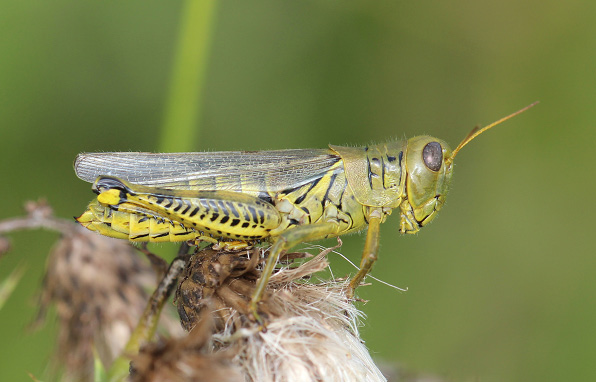
Figure 1. Differential grasshopper. (Adam Varenhorst, South Dakota State University)
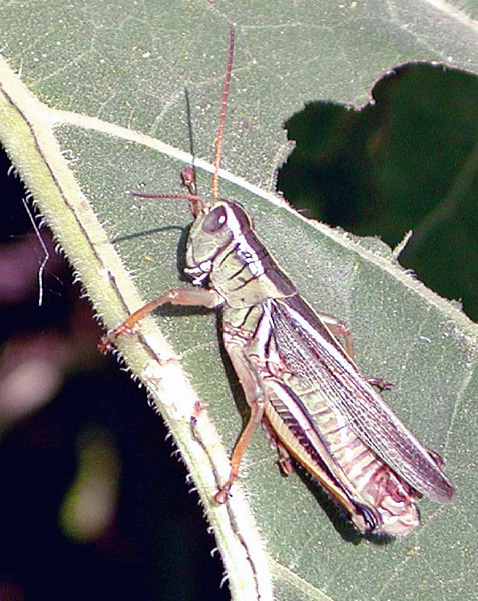
Figure 2. Two-striped grasshopper. (Janet Knodel, NDSU)
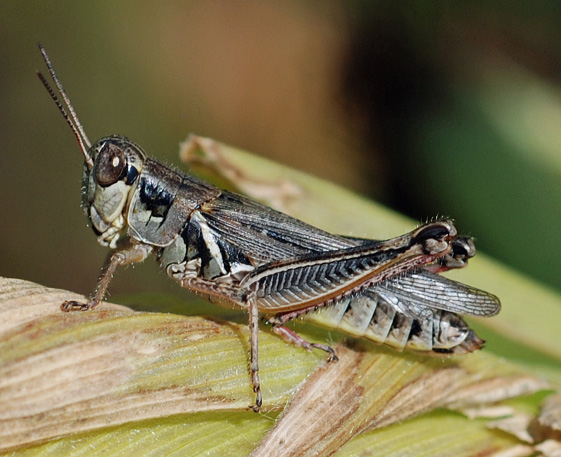
Figure 3. Red-legged grasshopper. (Janet Knodel, NDSU)
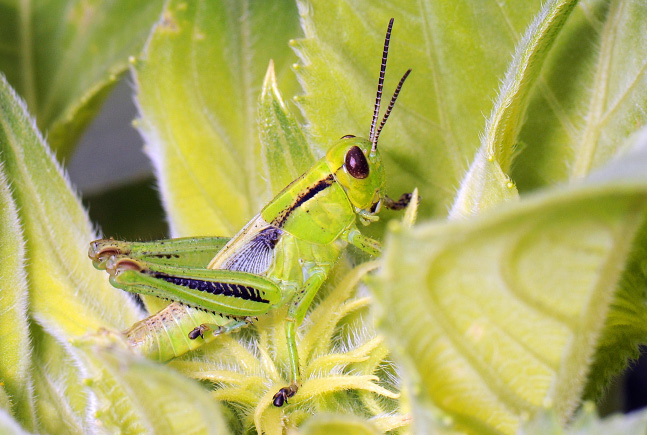
Figure 4. Grasshopper nymph. (Patrick Beauzay, NDSU)
A.J. Varenhorst, P.M. Wagner, P.B. Beauzay, S.D. Eigenbrode, J.J. Knodel, T.J. Prochaska, G.V.P. Reddy and K.W. Wanner
PULSE CROPS INFESTED
Chickpea, field pea and lentil.
IDENTIFICATION
Adult:
• Approximately ¾ to 2 inches long, depending on species.
• Differential grasshopper (Figure 1): green-yellow with black chevrons on the femur of the hind legs.
• Two-striped grasshopper (Figure 2): yellow-brown with two light yellow stripes running from the head to the end of the wings.
• Red-legged grasshopper (Figure 3): green-yellow body with distinct red tibia of the hind legs; wings extend beyond the tip of the abdomen.
Immature (nymph): Figure 4
• Size and color variable based on nymph instar and species.
• Nymphs have underdeveloped wings and cannot fly.
CROP DAMAGE
Adults and nymphs are defoliators, feeding on green plant material and creating holes on leaves or pods later in the year. High-population (outbreak) seasons may result in yield loss and a delay in maturity due to delayed pod set.
SCOUTING TIPS
• Monitor grasshopper populations from June through fall, especially following long, warm falls, or drought.
• Scout for grasshoppers in field edges and within the field.
• Thresholds are based on four sweep net samples or visual counts of adults and nymphs within 1 square yard.
• Adult populations remain active until the first hard frost.
CULTURAL CONTROLS
• Harvest as early as possible to prevent pod feeding.
ECONOMIC THRESHOLD
• Nymphal stage grasshoppers are easier to manage than adults.
• Lentil ET = two per square yard
– Lentil is less tolerant to grasshopper defoliation than field pea or chickpea.
• Field pea and chickpea ET:
• Grasshoppers overwinter as eggs laid in bare soil, field margins and road ditches.
• They emerge in April-May as nymphs; adults appear in late July-August.
• Eggs are laid in the fall.
• Grasshoppers have one generation per year.
• Additional grasshopper species, such as grassland grasshoppers, may be present.
Pod and Seed Feeders
Tarnished plant bug (or Lygus/plant bugs)
Lygus lineolaris (Palisot de Beauvois) and other Lygus species
Hemiptera: Miridae
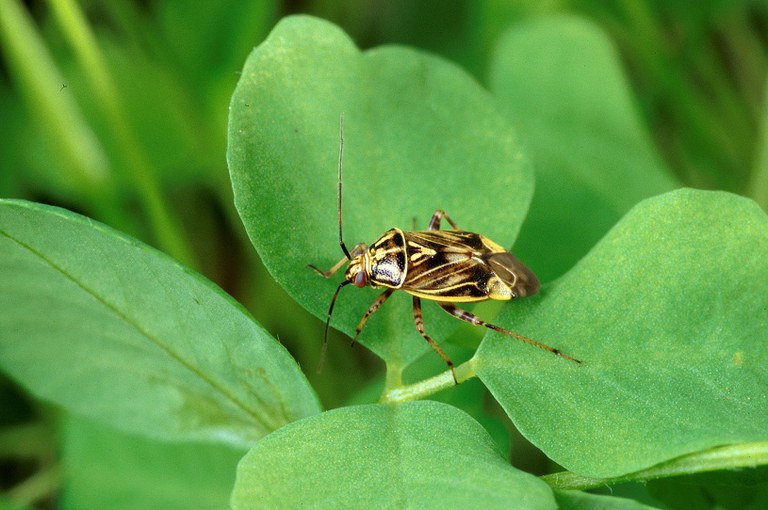
Figure 1. Tarnished plant bug adult. (S. Bauer, USDA ARS)
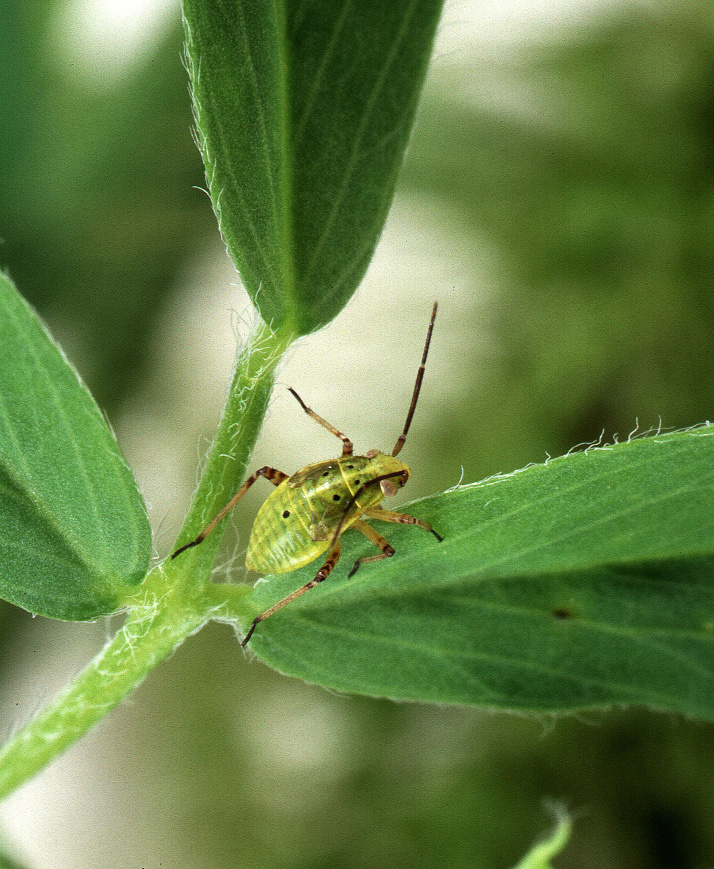
Figure 2. Tarnished plant bug nymph. (S. Bauer, USDA ARS)
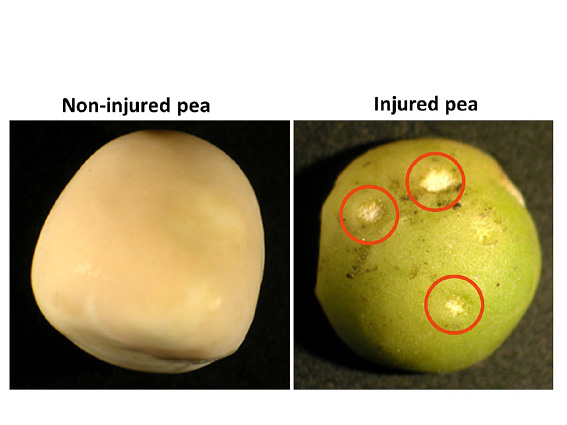
Non-injured pea Tarnished plant bug
Figure 3. Chalk spot feeding injury caused by Lygus bugs on field peas. (Janet Knodel, NDSU)
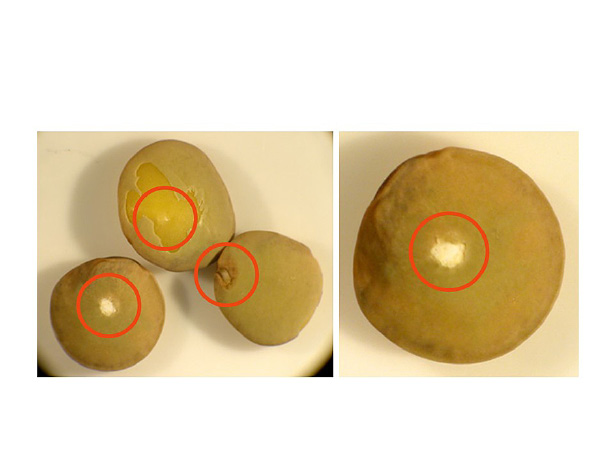
Figure 4. Chalk spot feeding injury caused by Lygus bugs on lentils. (Janet Knodel, NDSU)
J.J. Knodel, P.B. Beauzay, S.D. Eigenbrode, T.J. Prochaska, G.V.P. Reddy, A.J. Varenhorst, P.M. Wagner and K.W. Wanner
PULSE CROPS INFESTED
Field pea and lentil.
IDENTIFICATION
Adult: Figure 1
• ¼ inch long; pale green, light brown or dark brown with a distinctive triangular marking on its back.
Immature (nymph): Figure 2
• Similar appearance to adults but smaller; no wings (only wing buds); five black dots on thorax and abdomen.
• Can be confused with aphids.
CROP DAMAGE (FIGURES 3 and 4)
Plant injury is caused by the piercing-sucking mouthpart, which punctures the pods and seed coats, injecting a toxic substance into plant parts. This injury is called chalk spot, which is a pit or craterlike depression in the seed coat with or without a discolored chalky appearance. Lygus bugs also feed on flower buds; the buds turn white and fall to the ground.
SCOUTING TIPS
• Monitor for Lygus bugs using a 15-inch sweep net during bloom to pod development (until seeds in the pod have become firm).
• Make 10 180-degree sweeps at five sampling sites in a field during the warm, sunny part of the day (2 to 6 p.m.).
ECONOMIC THRESHOLD
• A foliar insecticide treatment is recommended when 10 Lygus (adult or nymph) per 25 sweeps are present.
OTHER IMPORTANT FACTS
• Lygus bugs are known to feed on more than 385 field crops and weed plants.
• Lygus bugs will migrate quickly into nearby pulse crop fields and often in high numbers after alfalfa, a preferred host, is cut.
• One insecticide application during late flowering to early pod stage should prevent significant yield losses.
• Avoid spraying a blooming crop during the day, when bee activity is high.
Pod and Leaf Feeders
Pea weevil
Bruchus pisorum (L.)
Coleoptera: Chrysomelidae
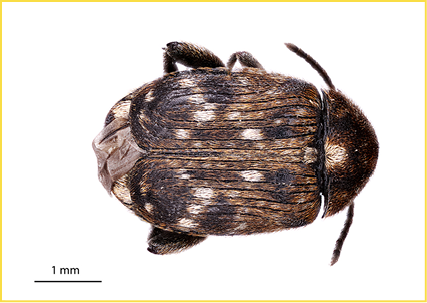
Figure 1. Pea weevil with white patches. (Gadi V.P. Reddy, Montana State University)
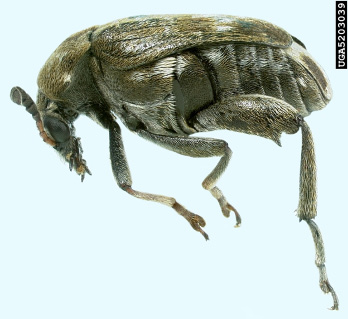
Figure 2. Pea weevil. (Natasha Wright, Cook’s Pest Control, www.bugwood.org)
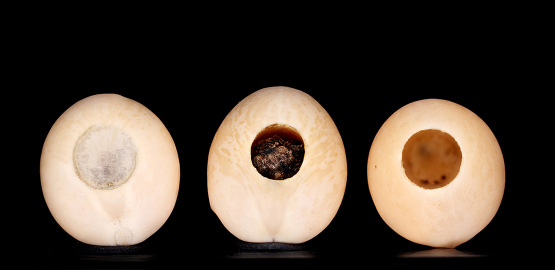
G.V.P. Reddy, P.B. Beauzay, S.D. Eigenbrode, J.J. Knodel, T.J. Prochaska, A.J. Varenhorst, P.M. Wagner and K.W. Wanner
PULSE CROPS INFESTED
Field pea.
IDENTIFICATION
Adult: Figures 1 and 2
• Globular with long legs; brown with gray, white or black patches; about ¼ inch long.
• Elytra (wing covers) do not cover the end of the abdomen, which leaves the last abdominal segment exposed; black and white setae.
• Inner ridge of the ventral margin of the hind femur has a single spine (Figure 2).
• Females slightly bigger than males; a tiny spine on the distal end of the tibia of the middle leg distinguishes males from females.
Immature (larva):
• C-shaped with a brown head and creamy white body with reduced legs; about ¼ inch long.
• Larval development takes four to eight weeks, and most larvae develop in 41 days.
CROP DAMAGE
Adults lay eggs in the developing seeds within pods in pea fields; however, larvae complete their development in grain storage bins. Pea weevil is not a stored grain pest, although most larvae excavate the center of the pea and construct a circular exit hole while in the bin. At the end of this stage, the mature larvae cut through the seed coat, leaving the characteristic circular caps or “windows” over the cavities (Figure 3). Pea weevil seed feeding reduces yield, seed germination rates and grain quality.
SCOUTING TIPS
• Scout crop edges every three to four days from the start of flowering and when temperatures are above 68 F.
• Use a 15-inch sweep net to take 25 sweeps through the tops of plants; repeat at six or more sites per field.
• Focus sweeping around field edges and near trees of shelter belts.
CULTURAL CONTROLS
• Field sanitation destroys crop residues.
• Prevent seed shattering at harvest.
• Eliminate volunteer plants that serve as alternative pea weevil hosts.
• Plant and harvest early.
• Use hot (122 to 131 F) and cold (1.4 F) treatment during seed storage.
BIOLOGICAL CONTROLS
• The egg parasitoid Uscana senex Grese (Hymenoptera: Trichogrammatidae) has provided up to 80 percent parasitism.
HOST PLANT RESISTANCE
• A few resistant varieties – Adet, Glyans, Modus, Kamerton, Svit and Pleven 4 – are available.
ECONOMIC THRESHOLD
• Peas grown for livestock feed: one weevil per 25 sweeps (about 10 percent infestation at harvest) in the northwestern U.S; two weevils per 25 sweeps in the upper Midwest.
• Peas grown for human consumption: one weevil per 100 sweeps; food markets have zero tolerance for live or dead weevils or larvae in peas.
• Insecticide should be applied during bloom and once the majority of the adults have entered the fields but prior to egg laying.
OTHER IMPORTANT FACTS
• Pea weevils do not reproduce in grain storage bins.
• Fumigate pea seed heavily damaged by pea weevils prior to planting to prevent spreading pea weevils into new growing areas.
Sap Feeders
Pea aphid
Acyrthosiphon pisum (Harris)
Hemiptera: Aphididae
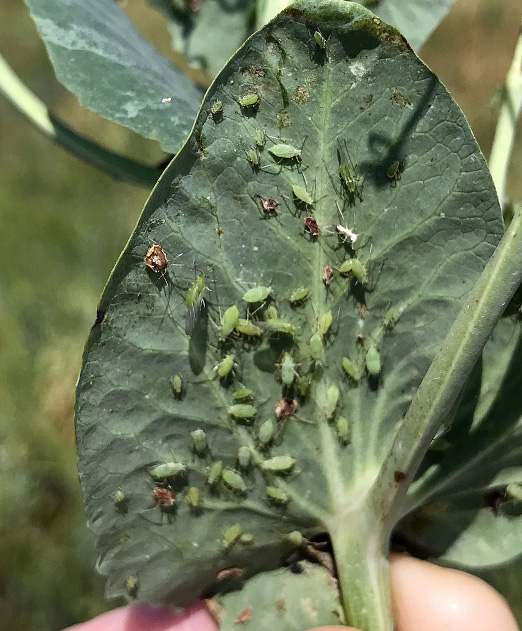
Figure 1. Pea aphids on underside pea leaf; note white-casted skin and brown fungus-infected aphids. (Julie Pasche, NDSU)
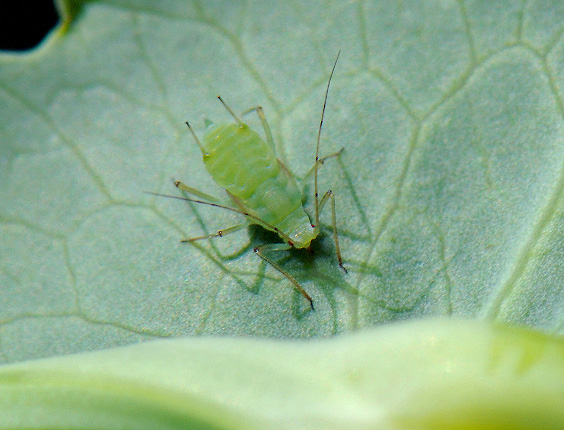
Figure 2. Close-up of pea aphid nymph. (Patrick Beauzay, NDSU)
S.D. Eigenbrode, P.B. Beauzay, J.J. Knodel, T.J. Prochaska, G.V.P. Reddy, A.J. Varenhorst, P.M. Wagner and K.W. Wanner
PULSE CROPS INFESTED
Field pea, lentil.
IDENTIFICATION
Adult: Figure 1
• Small, approximately 1/8 inch long; pear-shaped and pale to dark green with reddish eyes.
• Black bands on each antennal segment.
Immature (larva): Figure 2
• Similar to adult but smaller and without wings.
CROP DAMAGE
The pea aphid injures the plant directly by removing plant sap with its piercing-sucking mouthpart. Economic numbers of aphids can cause wilting, distortion of leave or, stunting, or kill the host plant. When infestations are economic, the whitish-casted skins and honeydew excreted by the aphids easily can be observed covering the plant. The flowering and early pod stages are the most susceptible to aphid feeding injury and can result in lower yields due to less seed formation and smaller seed size. Aphid feeding usually does not impact protein content and other quality attributes. Managing the aphid is complicated because it is a vector of several important and injurious viruses affecting pea and lentil, notably Pea seedborne mosaic, Pea enation mosaic virus and Bean leaf roll virus.
SCOUTING TIPS
• Pea aphids are on the undersides of leaves and near leaf tips.
• Scout for aphids by using a sweep net or examining the number of aphids per plant tip when 50 to 75 percent of the crop is flowering.
• Take at least 10 180-degree sweeps using a 15-inch sweep net or check five 8-inch plant tips from four locations in the field.
CULTURAL CONTROLS
• Early seeding also can reduce pea aphid damage.
HOST PLANT RESISTANCE
• Virus-resistant pea varieties are available and more will be available in the future.
ECONOMIC THRESHOLD
• Economic thresholds may vary, depending on the value of the crops and cost of control, as well as variation in potential seed weight caused by variation in precipitation and heat stress. Control at the early pod stage provides protection through the pod formation and elongation stages, which are very sensitive to aphid feeding injury.
• Field pea: Insecticide treatment should occur when two to three aphids per 8-inch plant tip, or nine to 12 aphids per sweep (or 90 to 120 aphids per 10 sweeps). When virus is suspected or known to be present in migrating aphids, aggressive treatment with insecticides is prudent.
• Lentil: Insecticide treatment for pea aphid control should be considered (1) when you reach an economic threshold of 30 to 40 aphids collected per 180-degree sweep of a 15-inch-diameter insect net, (2) when few natural enemies are present and (3) when aphid numbers do not decline during a two-day period.
• Chickpea: No recommended economic threshold is available for pea aphids.
OTHER IMPORTANT FACTS
• It overwinters in perennial legumes, primarily alfalfa, and migrates across hundreds of miles as winged forms on prevailing winds into annual crops each spring.
• Aphid populations often are reduced naturally by heavy rains or beneficial insects (parasitoid wasps) and predators (ladybird beetle and lacewings).
Predators
BIOLOGICAL CONTROL – PREDATORS
Lady beetles or ladybugs
Coleoptera: Coccinellidae
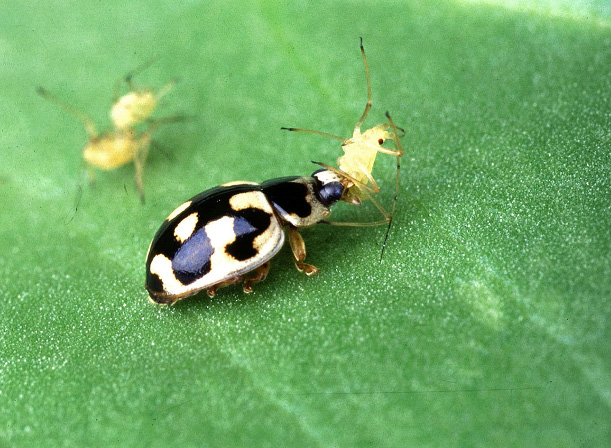
Figure 1. Fourteen-spotted lady beetle, Proplyea quatuordecimpunctata, feeding on aphids. (Scott Bauer, USDA ARS, www.bugwood.org)
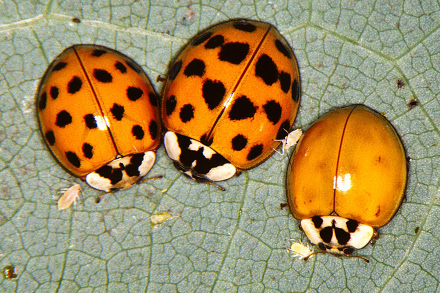
Figure 2. Multicolored Asian lady beetles, Harmonia axyridis. (James Kalisch, University of Nebraska)
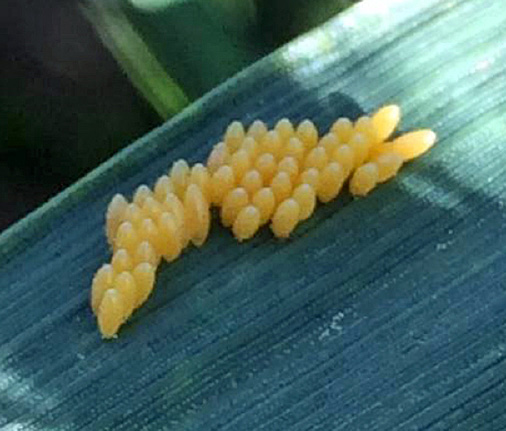
Figure 3. Lady beetle eggs. (Brandy Herauf, former IPM scout, NDSU)
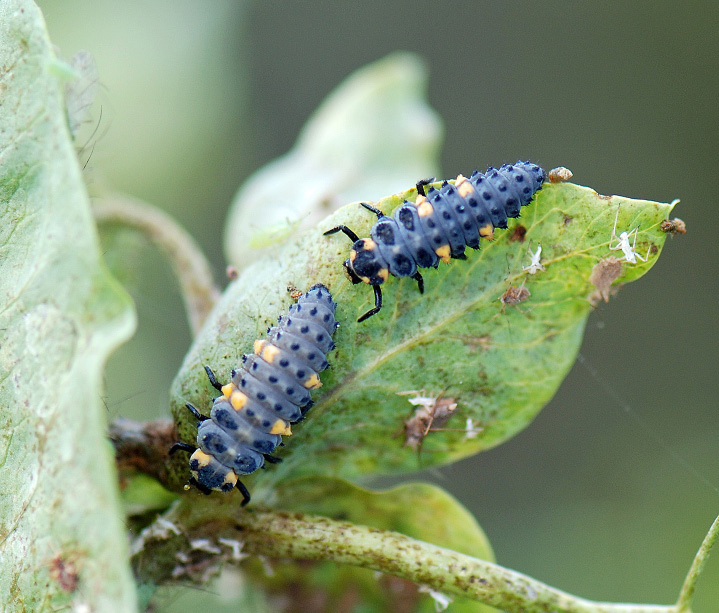
Figure 4. Lady beetle larvae. (Janet Knodel, NDSU)
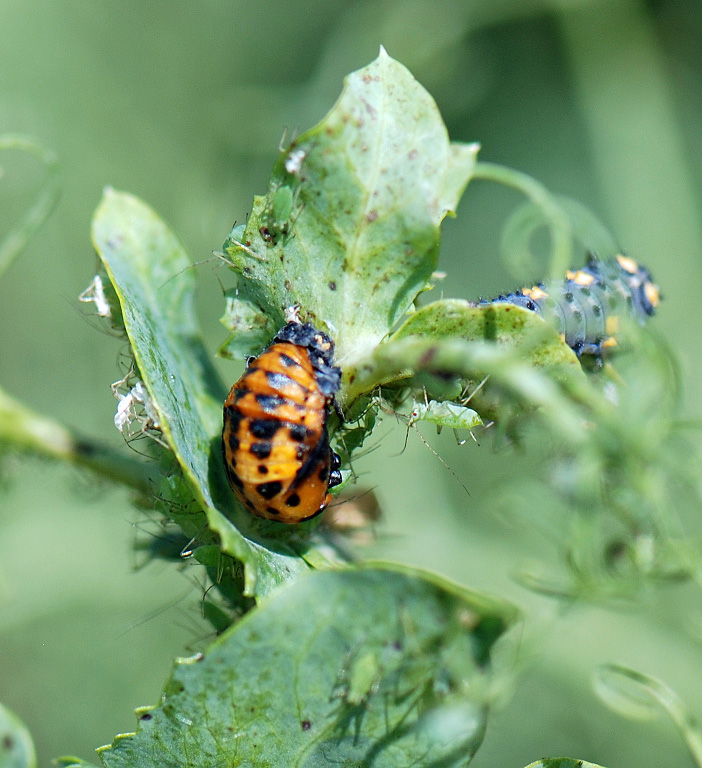
Figure 5. Lady beetle pupa. (Janet Knodel, NDSU)
T.J. Prochaska, P.B. Beauzay, S.D. Eigenbrode, J.J. Knodel, G.V.P. Reddy, A.J. Varenhorst, P.M. Wagner and K.W. Wanner
HOSTS/PREY
• Generalist predator: aphids, thrips and other soft-bodied insects and insect eggs.
• When prey is scarce, lady beetles also feed on pollen and nectar from flowers.
• Larger larvae are voracious feeders, consuming 30 to 50 aphids per day.
– Seven-spotted lady beetle adult may consume 300 aphids per day.
IDENTIFICATION
Adult: Figures 1 and 2
• Round and elongate-oval shaped.
• Body length variable by species.
– 1/8 to 1/3 inch long.
– Common convergent lady beetle is ¼ inch long.
• Often recognized by their bright red or orange forewings (elytra) with black spots.
• Some individuals less spotted or spotless.
Immature:
• Egg (Figure 3)
– Spindle-shaped; 1/8 inch long.
– Often yellow, cream or orange.
• Larvae (Figure 4)
– “Alligator”-shaped.
– Gray to black with orange or yellow spots on the prothorax and abdomen.
– Grows to about ¼ to ½ inch long before becoming a pupa.
• Pupae (Figure 5)
– Hemispherical shape.
– Often dark or yellow orange.
BIOLOGY
• These insects overwinter as adults along hedgerows, in leaf litter and in other protected places such as buildings.
• They are found in habitats including grasslands, forests, agricultural fields, tree crops and gardens.
• Their life cycle can last from a few months to more than a year: three to five days for eggs, 20 to 30 days for larvae, three to 12 days before a pupae emerges as an adult.
• They produce two to three generations per year, depending on species.
OTHER IMPORTANT FACTS
• They are common throughout North America (about 150 U.S. species; 450 North American species).
• They are commercially available from insectaries and can be released into infested fields as part of an IPM program.
Lacewings or aphid lions
Green Lacewing - Chrysoperla carnea (Stephens); Chrysoperla rufilabris (Burmeister); Hemerobius spp.
Neuroptera: Chrysopidae
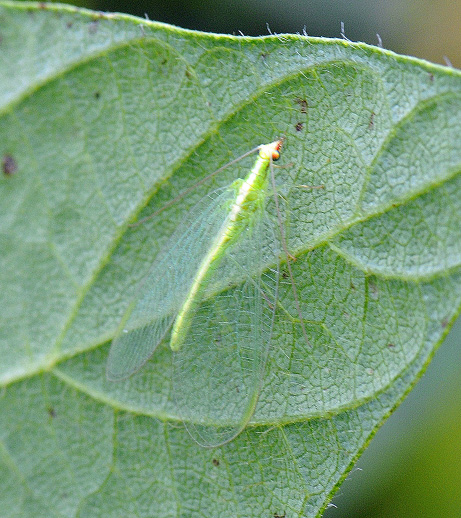
Figure 1. Green lacewing. (Patrick Beauzay, NDSU)
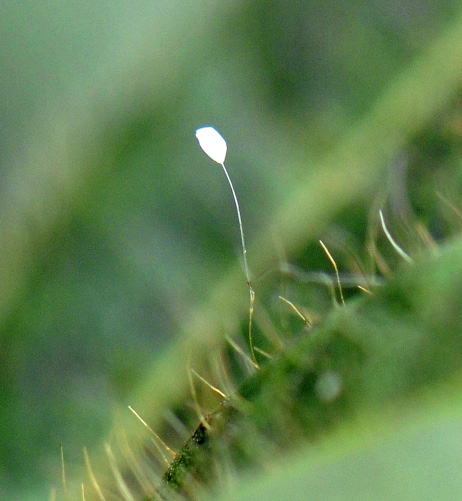
Figure 2. Lacewing egg. (Patrick Beauzay, NDSU)
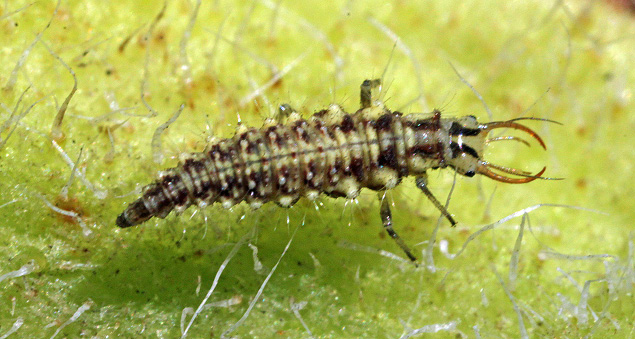
Figure 3. Lacewing larva. (Adam Varenhorst, South Dakota State University)
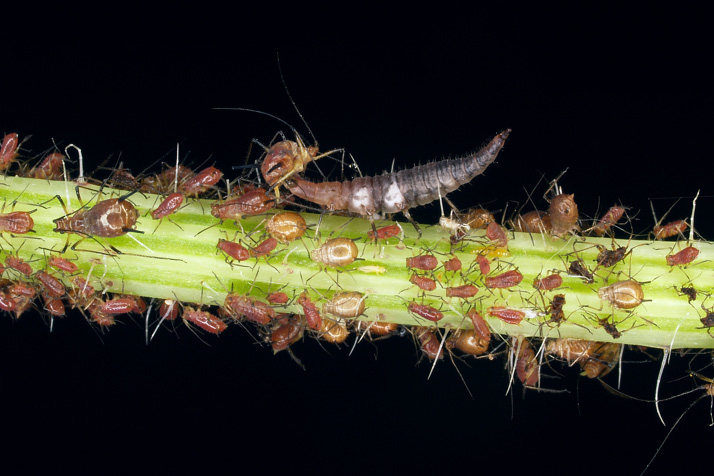
Figure 4. Lacewing larva feeding on aphids. (James Kalisch, University of Nebraska)
T.J. Prochaska, P.B. Beauzay, S.D. Eigenbrode, J.J. Knodel, G.V.P. Reddy, A.J. Varenhorst, P.M. Wagner and K.W. Wanner
HOSTS/PREY
• Generalist predator: aphids, caterpillars, leafhoppers, psyllids, white flies and thrips; insect eggs, spiders and mites.
• Larvae capable of consuming 200-plus aphids per week during development.
• Adults feed on same prey as larvae and on honeydew, pollen and nectar of flowers.
IDENTIFICATION
Adult: Figure 1
• Slender pale green or brown bodies.
• Approximately ¾ inch long.
• Two pairs of long, netlike wings held like a house roof over the body when resting.
• Golden to red eyes.
Immature (nymphs or larvae):
• Eggs: White on hairlike stalks (Figure 2).
• Larvae: Called “aphid lion” (Figures 3 AND 4).
– Alligator-shaped.
– Forcepslike, curved tubular mandibles.
– Mottled gray to brown body.
• Pupae
– Formed inside a spherical silken cocoon.
– Attached to vegetation.
BIOLOGY
• Overwinters as pupal cocoon in protected areas, such as shelterbelts near fields.
• Life cycle is about 28 to 40 days long: three to six days for eggs, 14 to 21 days for larvae and 10 to 14 days before pupae emerge as adults; temperature influences life cycle length.
• Larvae develop through three instars (stages), growing progressively larger.
• Three to four generations per year.
OTHER IMPORTANT FACTS
• Common throughout North America.
• Biological control important component of is IPM in pulse crops because biological control agents:
– Possess excellent searching qualities.
– Exhibit high dispersal abilities; larvae can travel 80 to 100 feet in search of prey.
– Are commercially available from insectaries.
BIOLOGICAL CONTROL – PREDATORS
Minute pirate bugs
Orius spp. / Anthocoris spp.
Hemiptera: Anthocoridae
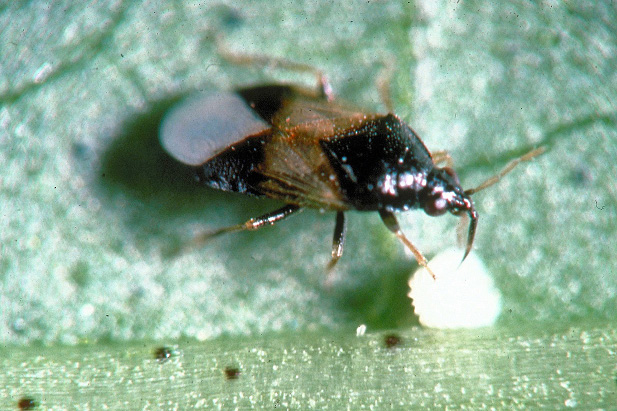
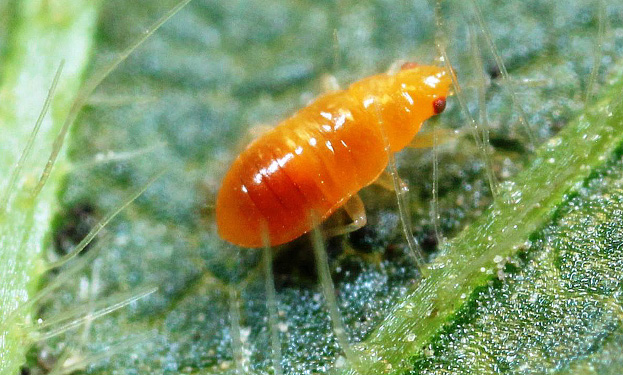
Figure 2. Orius nymph. (Adam Sisson, Iowa State University, www.bugwood.org)
P.M. Wagner, P.B. Beauzay, S.D. Eigenbrode, J.J. Knodel, T.J. Prochaska, G.V.P. Reddy, A.J. Varenhorst and K.W Wanner
HOSTS/PREY
• Generalist predators: small, soft-bodied pests (mites, thrips, aphids, whiteflies).
• Adults and nymphs can consume up to 30 spider mites per day.
IDENTIFICATION
Adult: Figure 1
• Approximately 1/10 inch long.• Flat, oval-shaped body.
• Mostly black with light brown band in middle of the body.
• Wings rest on body and are clear near the end of the abdomen.
• Wings extend slightly beyond the end of the abdomen.
• Long, piercing-sucking mouthparts.
Immature (nymphs): Figure 2
• Size variable based on nymphal stage; less than 1/10 inch.
• Flat, oval-shaped body.
• Color changes as nymphs mature.
– Start out clear, then yellow and finally reddish brown.
• Underdeveloped wings; cannot fly.
BIOLOGY
• Overwinter as adults in protected areas (plant debris).
• Emerge in early spring to mate and lay eggs.
• Eggs hatch in four to five days, nymphs mature in two to three weeks, adults live for another three to four weeks.
• Typically two to three generations per year.
• Adults and nymphs are predators.
OTHER IMPORTANT FACTS
• Minute pirate bugs are attracted to infested fields and actively search for prey.
• Biological control agents are commercially available from insectaries and can be released into infested fields as part of an IPM program.
BIOLOGICAL CONTROL – PREDATORS
Syrphid flies or hoverflies
Toxomerus species, Syrphus species and others
Diptera: Syrphidae
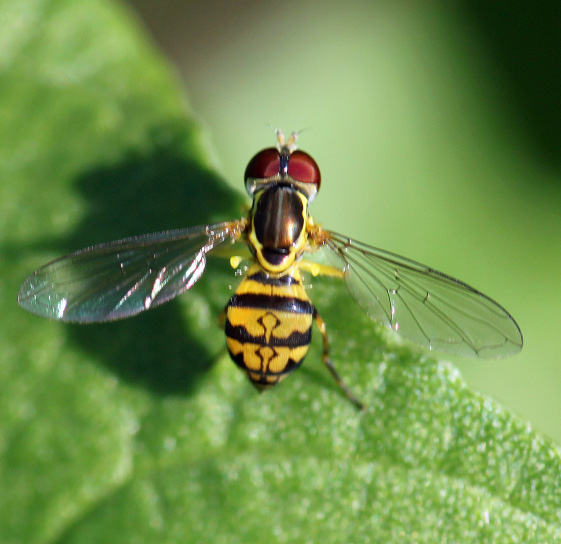
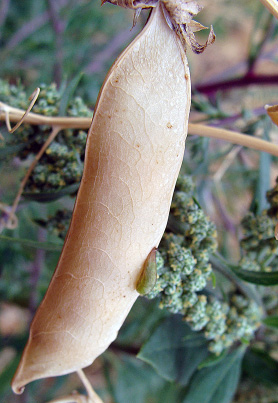
Figure 2. Syrphid fly larva on pea pod. (Janet Knodel, NDSU)
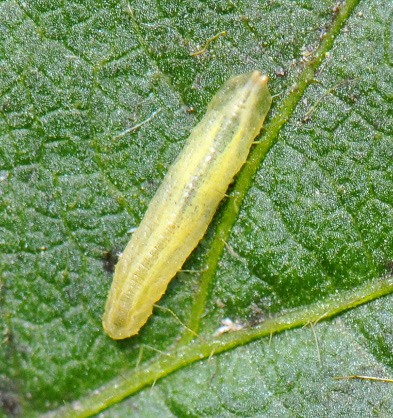
Figure 3. Syrphid fly larva. (Patrick Beauzay, NDSU)
J.J. Knodel, P.B. Beauzay, S.D. Eigenbrode, T.J. Prochaska, G.V.P. Reddy, A.J. Varenhorst, P.M. Wagner and K.W. Wanner
HOSTS/PREY
• Adults feed on nectar, pollen and aphid honeydew; adults (flies) are important pollinators.
• Larvae prefer aphids, thrips, small caterpillars and other soft-bodied insects.
• One larva can consume about 400 aphids during its development.
• High populations of syrphid larvae can reduce aphid populations by 70 to 100 percent.
IDENTIFICATION
Adult: Figure 1
• Mimics bees or yellowjackets, 1/8 to ½ inch long, one pair of wings, body markings with bright yellow and black or brown, hairless body.
Immature (larvae): Figures 2 and 3
• ¼ to ¾ inch long, legless maggot; varies from brown, yellow, green to brown; narrow end is the head.
BIOLOGY
• Overwinters in the pupal stage in soil or leaf litter.
• Females lay a single white egg on leaves near aphid colonies or other suitable food sources.
• Life cycle is about 28 to 40 days long: three days for eggs, seven to 21 days for larvae and seven to 14 days before pupae emerge as adults.
• Larvae develop through three instars (stages), growing progressively larger; Larvae feed by sucking their prey dry.
• Two to four generations per year.
OTHER IMPORTANT FACTS
• Look for flies on flowers and larvae on plants while scouting for insect pests. Sweep nets also can be used to detect adults or larvae.
• Larvae raise their head and swing it side to side as they look for prey.
• Pesticides are harmful to syrphids. Avoid spraying flowering vegetation in ditches or shelter belts to provide an unsprayed refuge for adult flies near fields.
BIOLOGICAL CONTROL
Parasitic wasps or parasitoids
Aphidius ervi and others
Hymenoptera: Braconidae: Aphidiinae
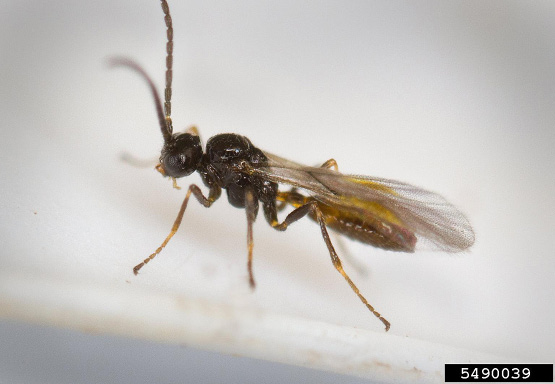
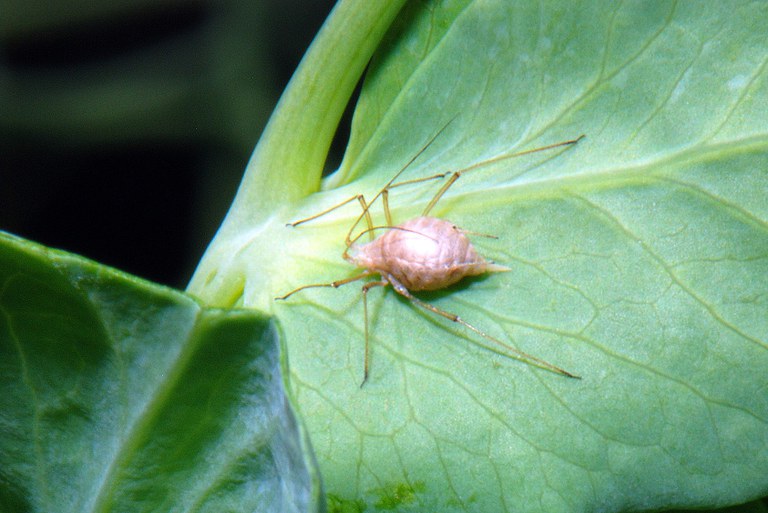
Figure 2. Pea aphid mummy parasitized by wasp. (Patrick Beauzay, NDSU)
P.B. Beauzay, S.D. Eigenbrode, J.J. Knodel, T.J. Prochaska, G.V.P. Reddy, A.J. Varenhorst, P.M. Wagner and K.W. Wanner
HOSTS/PREY
• Aphids, caterpillars and eggs of insects.
IDENTIFICATION
• Adults are small, slender, brown wasps less than 1/8 inch long (Figure 1).
• Species identification requires microscopic examination and should be done by a specialist.
BIOLOGY
• The adult female inserts one (usually) or two eggs into an aphid by means of a needlelike ovipositor.
• Aphids become paralyzed while the wasp larva consumes the aphid from the inside out.
• Parasitized aphids are referred to as “mummies: (Figure 2) and are light brown and somewhat swollen.
• Once the wasp larvae complete pupation, they chew a small hole through the skin of the aphid and emerge as adults.
OTHER IMPORTANT FACTS
• Parasitoids are a very large group including many other families besides Braconidae, such as Chalcididae, Eulophidae, Ichneumonidae, Platygasteridae, Pteromalidae and Trichogrammatidae.
• Some parasitoids feed inside the host (endoparasitoid), while others attach to the outside of the host (ectoparasitoid).
• Because the wasps are mobile and difficult to see, look for aphid mummies during regular scouting for insect pests.
• Pea aphids infected with the bacterial symbiont Hamiltonella defensa may not be parasitized successfully due to the symbiont causing wasp egg mortality. Parasitism of symbiont infected aphids is more successful if the female wasp lays two eggs inside the aphid.
• Pesticides are harmful to parasitoids. Avoid spraying flowering vegetation in ditches or shelter belts to provide an unsprayed refuge for adult wasps near fields.
• Some species are commercially available for release into fields.
BIOLOGICAL CONTROL
Entomopathogenic fungi
Entomophaga grylli, Pandora neoaphidis and others
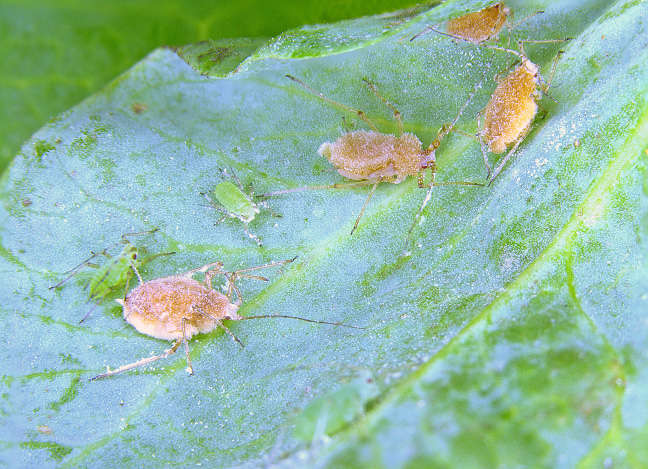
Figure 1. Fungus-infected pea aphids (Patrick Beauzay, NDSU)
P.B. Beauzay, S.D. Eigenbrode, J.J. Knodel, T.J. Prochaska, G.V.P. Reddy, A.J. Varenhorst, P.M. Wagner and K.W. Wanner
HOSTS/PREY
• Grasshoppers (Entomophaga grylli), pea aphid (Pandora neoaphidis), cutworms (various pathogens).
IDENTIFICATION
• Grasshoppers infected with Entomophaga grylli will crawl to the top of a plant and grasp it tightly before dying. This behavior led to the name “Summit disease.”
• Aphids infected with Pandora neoaphidis appear flattened and covered with a pinkish granular coating.
• Pathogens infecting cutworms are not readily visible because they are found in the soil and crop residue.
BIOLOGY
• Entomophaga grylli lives best in warm, moist conditions.
• Grasshoppers exhibiting “Summit disease” ensure that the fungal spores are widely distributed by climbing behavior. Under optimum conditions, epizootics can occur and provide excellent natural control of grasshoppers.
• Spores of Pandora neoaphids disperse in the air and are spread by lady beetles feeding on infected aphid cadavers.
• Fungal pathogens also infect cutworms and are most prevalent during wet springs.
OTHER IMPORTANT FACTS
• Look for fungus-infected grasshoppers and aphids during regular scouting for insect pests.
This publication is supported by the North Central IPM Center, and the U.S. Department of Agriculture’s National Institute of Food and Agriculture.
March 2018




